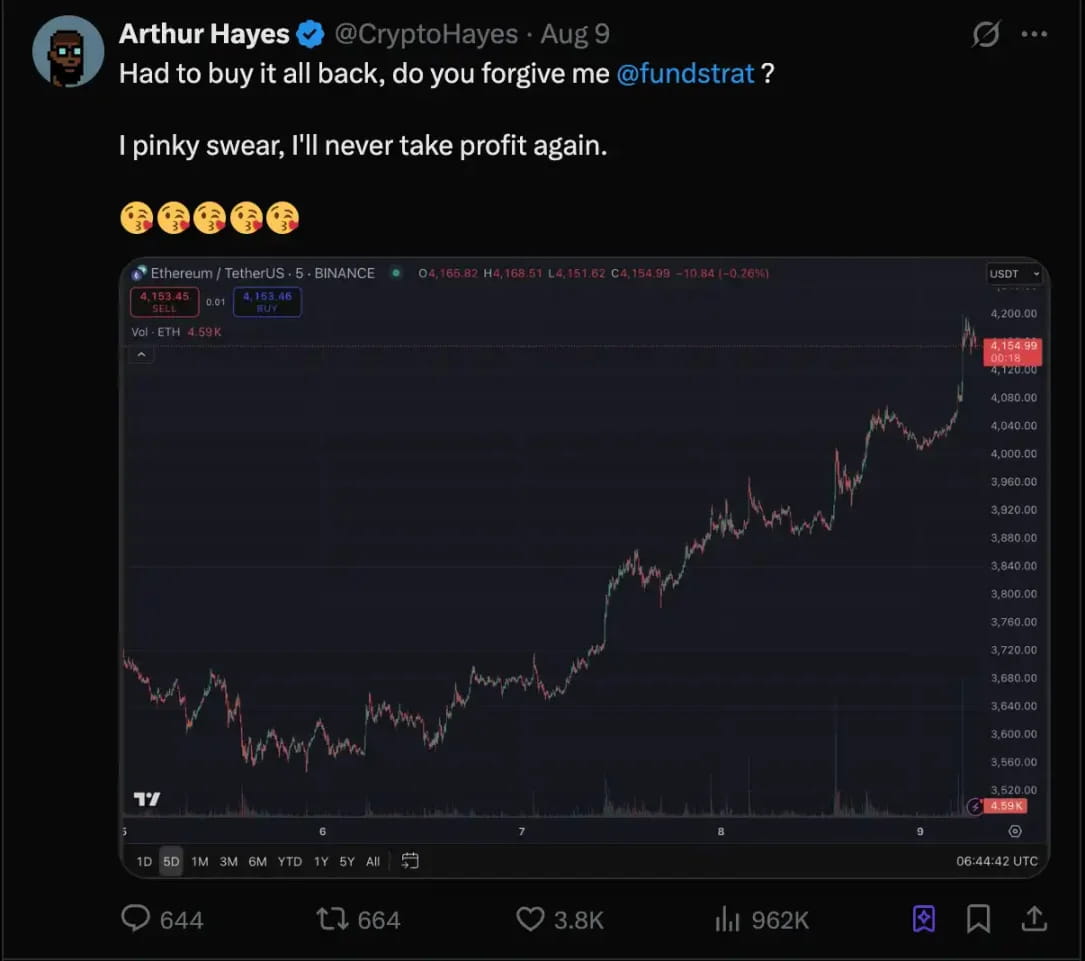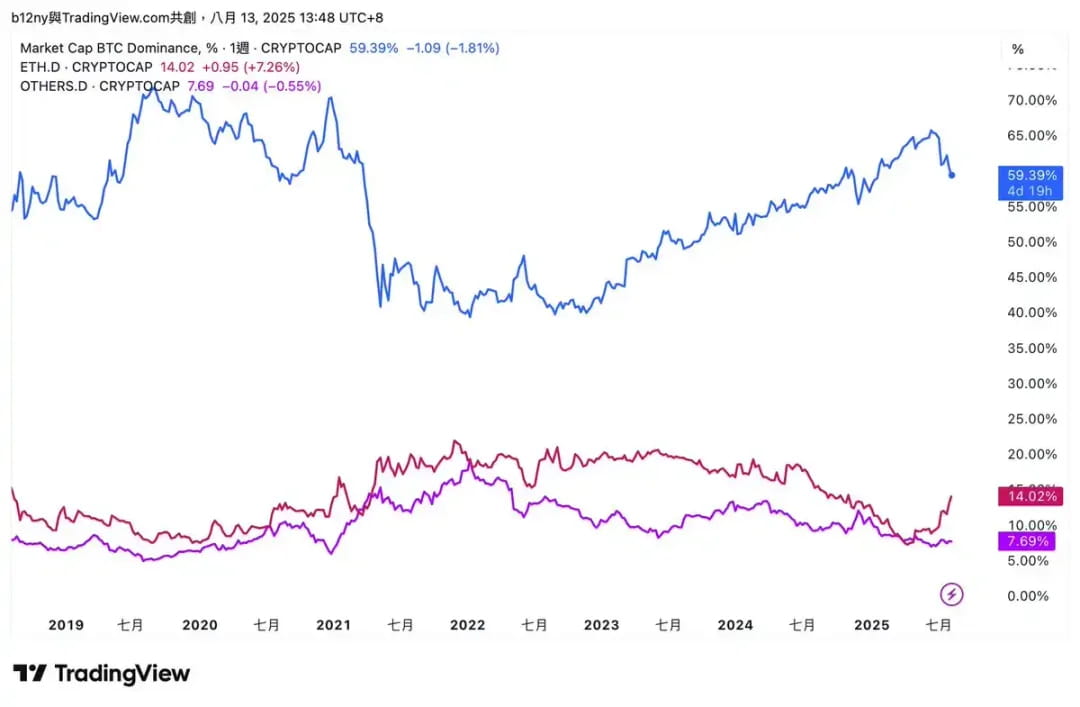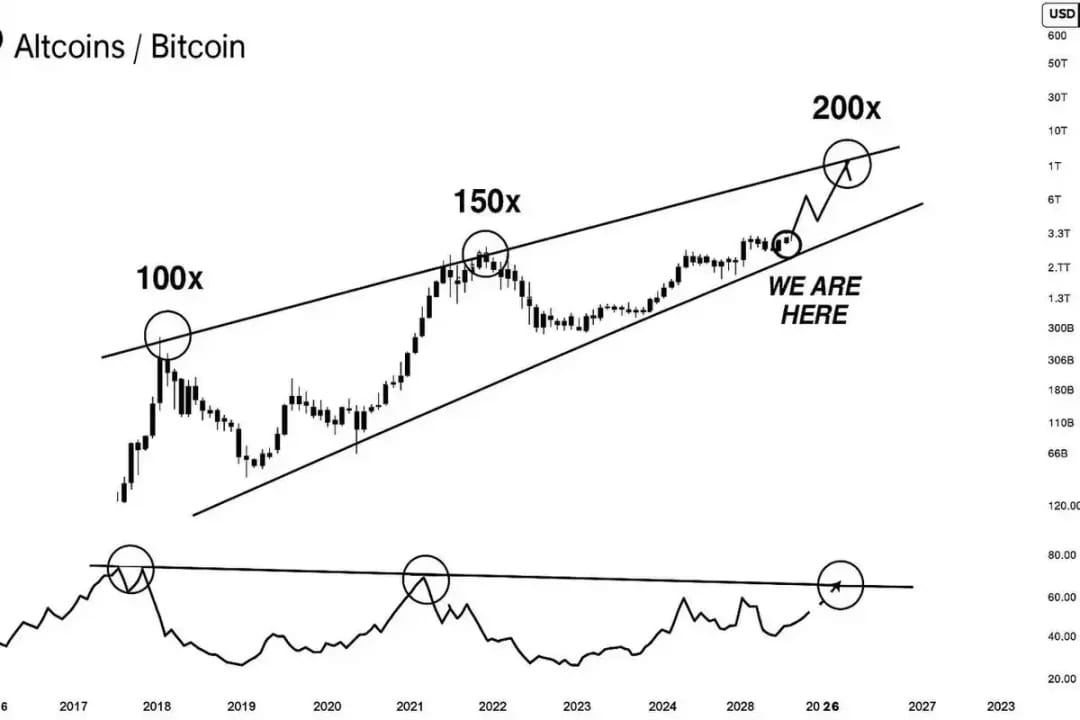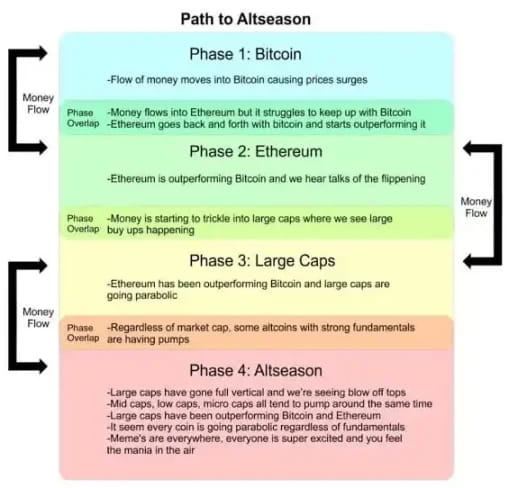Written by: kkk, Rhythm
On August 12, Ethereum broke through $4700, setting a new high in four years. @CryptoHayes, who took profits early last week, re-purchased Ethereum on August 9; Bitcoin also hit a new high, and the total market capitalization of cryptocurrencies surged to $4.2 trillion, igniting market sentiment completely.

The traditional market is also bustling. The S&P 500 and Nasdaq 100 have both refreshed historical records, with global liquidity accelerating towards risk assets; the dollar index (DXY) has fallen below 98, further opening the floodgates for capital to flow into the stock and crypto markets. This macro environment not only consolidates the upward trend but also boosts investor confidence in high-risk assets.
Meanwhile, the market is almost certain that the Federal Reserve will cut interest rates at the meeting on September 17, with a probability close to 100%, lowering the benchmark rate to the range of 4.00%-4.25%. This expectation provides extra fuel for markets that rely on high liquidity—especially cryptocurrencies. Now, the wealth effect of the altcoin season has become a hot topic, with the key being when it will fully start.
Next, Rhythm BlockBeats has summarized traders' views on the upcoming market situation to provide some directional references for this week's trading.
@b66ny
BTC.D has shown a clear downward trend recently, falling from previous highs to about 57.7%. Combined with the trends in ETH.D, I believe this is a typical signal of fund rotation: market funds are beginning to withdraw from relatively stable assets, pursuing targets with higher risks and potential returns. Historically, a sustained decline in BTC.D has often been one of the necessary conditions for the start of an altcoin season.
ETH.D not only represents the strength of Ethereum itself but is also often seen as the leader of the entire altcoin market. Currently, ETH.D is performing strongly, with its dominance recovering to 14.0%. Accompanied by a rapid rise in ETH prices, ETH/BTC has increased by more than 4% in 24 hours, indicating a clear trend of funds flowing from Bitcoin to Ethereum.
This trend is a classic script of fund rotation: In the first phase, BTC stagnates or even declines, and funds begin to flow into ETH; the rise in ETH not only boosts market confidence but also creates conditions for more liquidity to be injected into the altcoin market.
What is worth paying attention to next is OTHERS.D (the market capitalization ratio of mid- and small-cap altcoins excluding major coins like BTC and ETH). Currently, OTHERS.D remains in a long-term bottom consolidation, without showing explosive growth similar to ETH.D, which means that fund enthusiasm is still concentrated on a few leading assets like ETH. Although SOL has also seen significant gains today, the signs of fund rotation are becoming clearer, but it has not yet fully spread to high-risk, small-cap speculative sectors.
From the perspective of three major indicators, the market is likely in the early stages of rotation:
Has occurred: BTC.D declining, funds overflowing.
Currently happening: ETH.D rising, funds concentrating into ETH.
Not yet occurred: OTHERS.D rising, funds spreading to small-cap altcoins.

@im_BrokeDoomer
From the comparison of altcoin and Bitcoin market capitalization from 2017 to now, we are currently at a key support position on the lower edge of the channel. This position has historically been a sensitive area for fund entry, often accompanied by a warming market sentiment and accelerated rotation. If this support is confirmed, the altcoin sector is expected to witness a collective explosion, marking the official start of a new altcoin season.

The initiation process of the altcoin season typically goes as follows: Bitcoin (BTC) starts the market trend → Ethereum (ETH) follows with a rise → BTC exerts force again → ETH breaks historical high (ATH) → Large-cap altcoins rise → BTC hits a new high → ETH and large-cap altcoins hit new highs together → Mid-cap altcoins take off → Small-cap altcoins explode comprehensively.
We are currently in the third phase, with ETH and large-cap altcoins hitting new highs, and subsequent explosions from other altcoins can be expected.

@ZssBecker
In the previous bull market of 2020, the narratives of most altcoins did not explode at the beginning but waited until the price of ETH broke its historical high and rose 3 times before fully initiating. At that time, funds poured into new narratives like a flood—such as the gaming sector—driving related tokens to soar 10, 20, or even 50 times; Sandbox even surged 80 times, and even the most hollow and marginal gaming projects could achieve several times of growth. This phenomenon did not truly occur until the later stages of the bull market, but once it started, it became a concentrated explosion period of the wealth effect.
I believe this scene will be replayed in this market cycle. We are still in the first phase of the altcoin season—domination of BTC and ETH. It won't be until ETH breaks above $5000 and mainstream altcoins achieve 2-3 times growth that market funds will frantically seek the next narrative. The most likely successors will be AI, RWA, and gaming, as these three areas have been efficiently penetrated and made profitable by the crypto industry in reality, possessing strong narratives and high potential returns.
The last round of gaming narratives led countless people to turn a few thousand dollars of capital into millions of dollars in assets; this time, the scale of market funds is larger and the risk appetite is higher. Once it starts, the driving force of funds will only be more intense. For investors, the key is not to anxiously chase now, but to patiently wait and lay out in advance. When the signal for narrative switching appears, the climax of the altcoin season will truly arrive.
@lanhubiji
Understanding market structure reveals that an altcoin season is inevitable, but its form may be completely different from the past two cycles. Previously, the number of altcoins was limited, and funds were relatively concentrated, leading to a general rise in almost all leading sectors; now, there are already over a million cryptocurrencies in the market, and competition is extremely dispersed, making it impossible for funds to cover all assets.
This means that the current market cycle is more likely to see a 'localized altcoin season'—funds will concentrate in a few sectors or individual tokens with strong narratives, strong communities, and strong liquidity to create localized frenzies, while most coins will still be ignored by the market. For investors, opportunities still exist, but the probability of selecting the right targets is much lower than in the past; currently, AI tracks are more favored.
@joao_wedson
The real altcoin season has not yet begun. The typical flow path of smart money is: first flowing from BTC to ETH, then into leading large-cap coins, and finally spreading to mid- and small-cap tokens. The current market is only just entering the first half, and the actual 'altcoin carnival' is still on its way, possibly continuing until November. In other words, the rise we see now is just the 'appetizer'; the real 'main course' has yet to be served.




